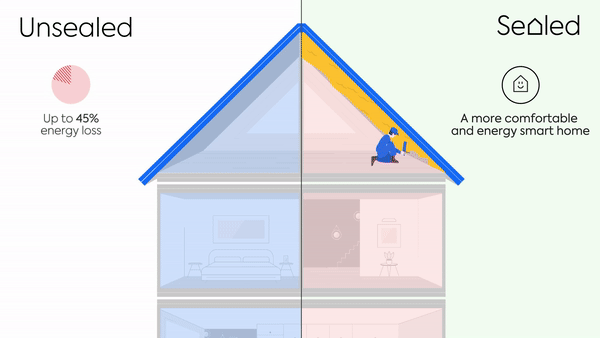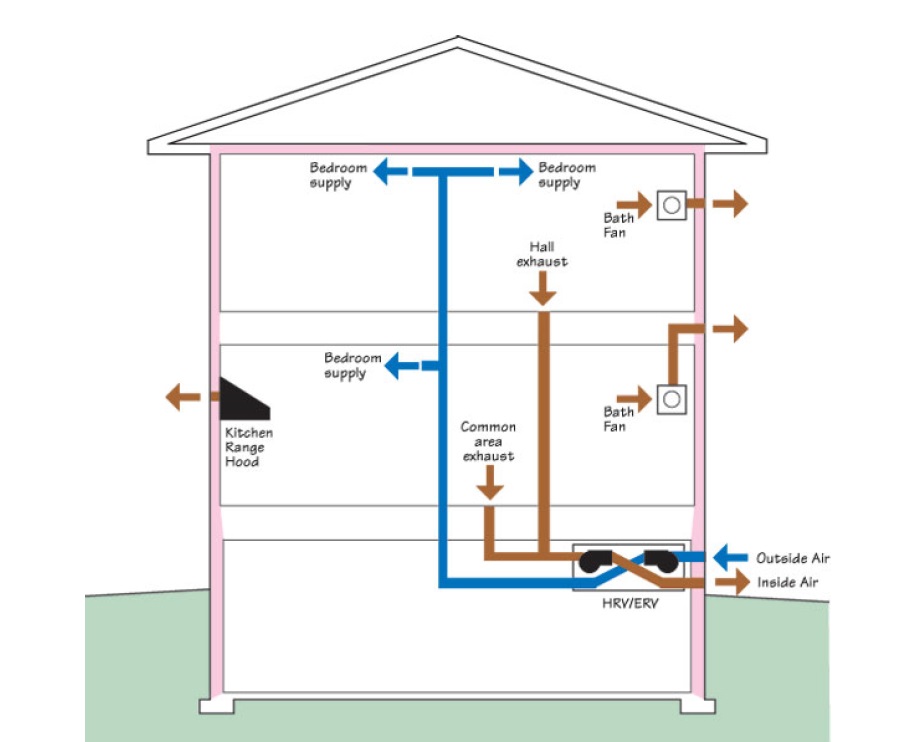How to Improve Indoor Air Quality with Home Ventilation Melbourne
Wiki Article
Recognizing the Value of Home Ventilation for a Healthier Living Environment
Home air flow plays an important duty in preserving a healthy and balanced living setting. It helps with the exchange of outside and interior air, which is essential for enhancing air top quality. Without appropriate ventilation, homes can end up being reproducing grounds for irritants and contaminants. The consequences of insufficient air circulation can be significant. This brings up the inquiry of exactly how home owners can properly implement air flow techniques to secure their health and health. Understanding these techniques is crucial.
The Essentials of Home Ventilation
Home ventilation works as a necessary part of interior air quality and convenience. It includes the process of trading stale interior air with fresh outside air, consequently minimizing moisture and controlling temperature. Appropriate air flow systems can consist of natural approaches, such as open windows and vents, along with mechanical systems, such as exhaust fans and air exchangers. Efficient home air flow aids prevent problems like interior mold growth and the build-up of unsafe bits. It also enhances general energy performance, as well-ventilated rooms can keep comfy temperature levels with less reliance on heating and cooling down systems. Recognizing the essentials of home air flow is important for property owners seeking to produce a much healthier living environment on their own and their family members.
Typical Sources of Indoor Air Air Pollution

Although lots of may not recognize it, indoor air contamination can stem from various resources within a home. Typical contributors include unstable natural substances (VOCs) released from paints, solvents, and cleansing items. Household devices, such as gas cooktops and fireplaces, can launch dangerous gases like carbon monoxide gas and nitrogen dioxide. Furthermore, mold and mildew thrive in wet locations, releasing spores that impact air quality. Pet dander, allergen, and pollen can gather inside, further aggravating contamination levels. Smoking cigarettes inside creates poisonous chemicals that stick around airborne. Lastly, building materials, including asbestos and formaldehyde, can off-gas damaging materials. Acknowledging these sources is vital for preserving a much healthier indoor environment and promoting reliable ventilation strategies.
Health And Wellness Effects of Poor Air Flow
Indoor air pollution can have considerable health and wellness implications, particularly when air flow is insufficient. Poor ventilation can bring about the accumulation of unsafe pollutants, such as volatile organic substances, mold, and particulate matter. This buildup may result in breathing problems, including bronchial asthma, allergic reactions, and persistent obstructive pulmonary condition. People may experience signs like migraines, exhaustion, and irritation of the eyes, nose, and throat. Vulnerable populaces, such as children and the elderly, are at higher risk for serious health effects. Long-term exposure to badly aerated settings can additionally add to more severe problems, consisting of cardio illness. Making sure appropriate ventilation is vital for preserving a healthy and balanced living setting and reducing the threat of wellness issues linked with indoor air contamination.Effective Ventilation Approaches for Your Home
Correct ventilation is important for maintaining a healthy indoor setting, and carrying out effective approaches can significantly improve air top quality. House owners can start by ensuring that exhaust followers are set up in kitchens and washrooms to eliminate excess dampness and smells. Opening up home windows continue reading this on a regular basis permits fresh air to flow, especially during light weather condition. In addition, utilizing air cleansers with HEPA filters can aid capture airborne toxins. For homes with home heating and cooling down systems, maintaining HVAC systems and changing filters on a regular basis is important for peak efficiency. Including natural air flow techniques, such as cross-ventilation, can likewise enhance air click here now flow. Finally, sealing any type of leakages in home windows and doors avoids unwanted drafts, which can interfere with controlled air flow, inevitably causing boosted interior air quality and comfort.Keeping Optimum Air High Quality Year-Round
To keep suitable air high quality year-round, house owners should take on a proactive approach to handling their indoor setting. Routinely monitoring interior air high quality is crucial; this includes checking for pollutants such as dust, mold, and volatile natural substances (VOCs) Implementing reliable air flow systems, such as exhaust followers and air purifiers, can greatly reduce airborne impurities. Furthermore, routine upkeep of cooling and heating systems warranties peak performance and air circulation. Property owners ought to also consider moisture levels, as excessive moisture can bring about mold development. Seasonal modifications may necessitate adjustments in ventilation techniques to fit differing outdoor air high quality. By prioritizing these practices, property owners can create a much healthier living room, advertising general well-being for all owners throughout the year.Regularly Asked Inquiries
Exactly How Can I Tell if My Home Demands Better Ventilation?
To determine if a home calls for much better air flow, one ought to observe signs such as persistent moisture, mold development, moldy odors, condensation on home windows, or enhanced allergic reaction signs, indicating poor airflow and possibly poor interior air quality.What Are the Indicators of Poor Indoor Air Quality?

Can Houseplants Improve Indoor Air Top Quality Effectively?
The effectiveness of houseplants in enhancing indoor air high quality is debated. While some research studies recommend they can take in toxins and create oxygen, their visite site general impact might be marginal compared to appropriate ventilation and air filtration systems.Exactly how Commonly Should I Change My Air Filters?
The regularity of air filter modifications usually depends on usage and filter kind. Generally, it is advised to change filters every 3 months, though families with allergic reactions or pet dogs may need even more frequent adjustments for perfect efficiency.Are There Any Details Ventilation Equipments for Allergic Reaction Sufferers?
Many ventilation systems, such as HEPA-filtered devices, efficiently minimize irritants airborne. Home Ventilation Melbourne. These systems catch dirt, pet, and pollen dander, offering allergic reaction victims with a cleaner, healthier interior atmosphere while taking care of air top quality properly
It promotes the exchange of outdoor and indoor air, which is essential for enhancing air top quality. Home air flow serves as a crucial component of interior air top quality and comfort. It entails the procedure of trading stale interior air with fresh outdoor air, thereby decreasing humidity and regulating temperature level. Interior air contamination can have significant wellness effects, specifically when air flow is insufficient. Correct air flow is important for maintaining a healthy interior setting, and applying reliable methods can considerably enhance air top quality.
Report this wiki page